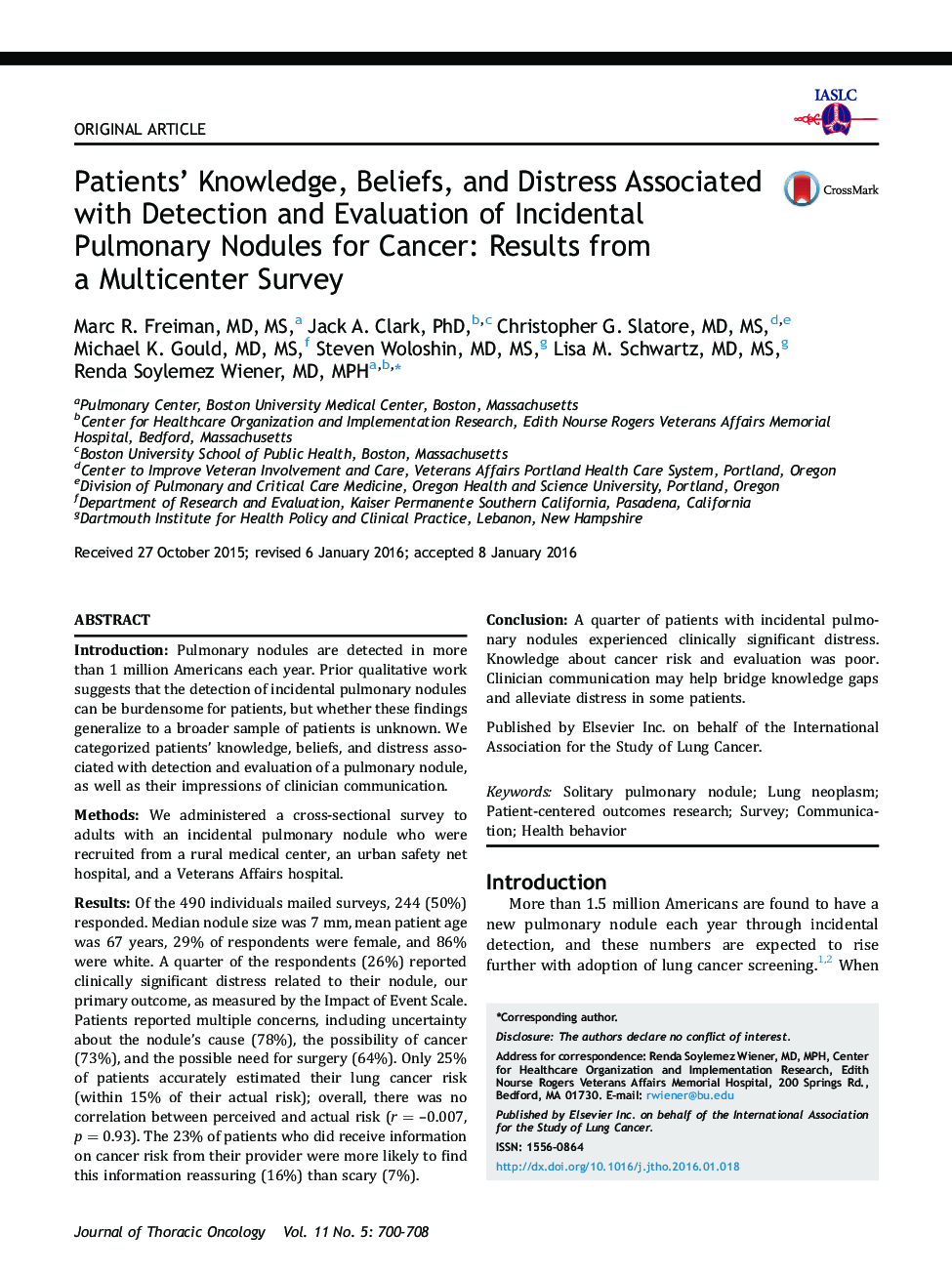| Article ID | Journal | Published Year | Pages | File Type |
|---|---|---|---|---|
| 6192526 | Journal of Thoracic Oncology | 2016 | 9 Pages |
IntroductionPulmonary nodules are detected in more than 1 million Americans each year. Prior qualitative work suggests that the detection of incidental pulmonary nodules can be burdensome for patients, but whether these findings generalize to a broader sample of patients is unknown. We categorized patients' knowledge, beliefs, and distress associated with detection and evaluation of a pulmonary nodule, as well as their impressions of clinician communication.MethodsWe administered a cross-sectional survey to adults with an incidental pulmonary nodule who were recruited from a rural medical center, an urban safety net hospital, and a Veterans Affairs hospital.ResultsOf the 490 individuals mailed surveys, 244 (50%) responded. Median nodule size was 7 mm, mean patient age was 67 years, 29% of respondents were female, and 86% were white. A quarter of the respondents (26%) reported clinically significant distress related to their nodule, our primary outcome, as measured by the Impact of Event Scale. Patients reported multiple concerns, including uncertainty about the nodule's cause (78%), the possibility of cancer (73%), and the possible need for surgery (64%). Only 25% of patients accurately estimated their lung cancer risk (within 15% of their actual risk); overall, there was no correlation between perceived and actual risk (r = -0.007, p = 0.93). The 23% of patients who did receive information on cancer risk from their provider were more likely to find this information reassuring (16%) than scary (7%).ConclusionA quarter of patients with incidental pulmonary nodules experienced clinically significant distress. Knowledge about cancer risk and evaluation was poor. Clinician communication may help bridge knowledge gaps and alleviate distress in some patients.
